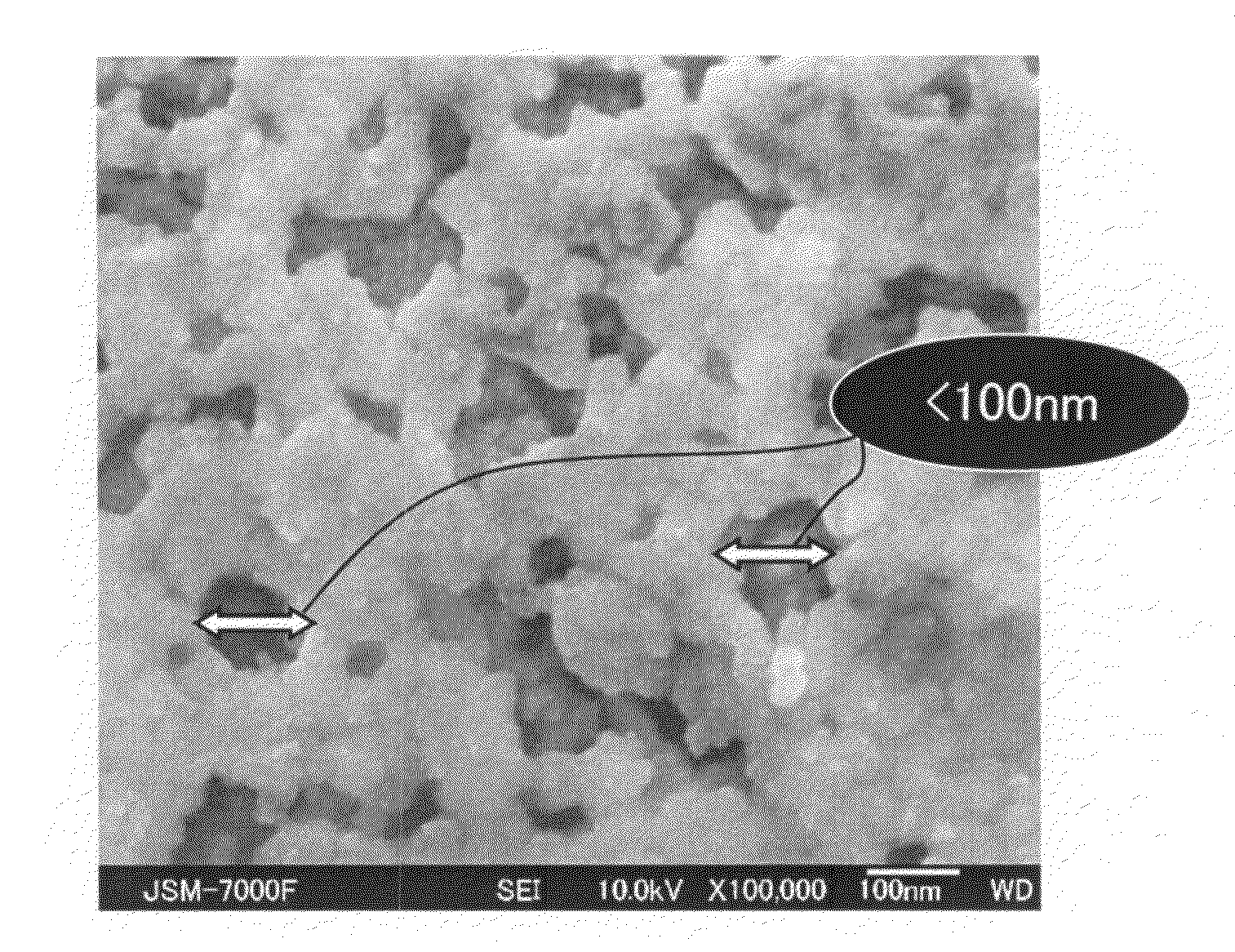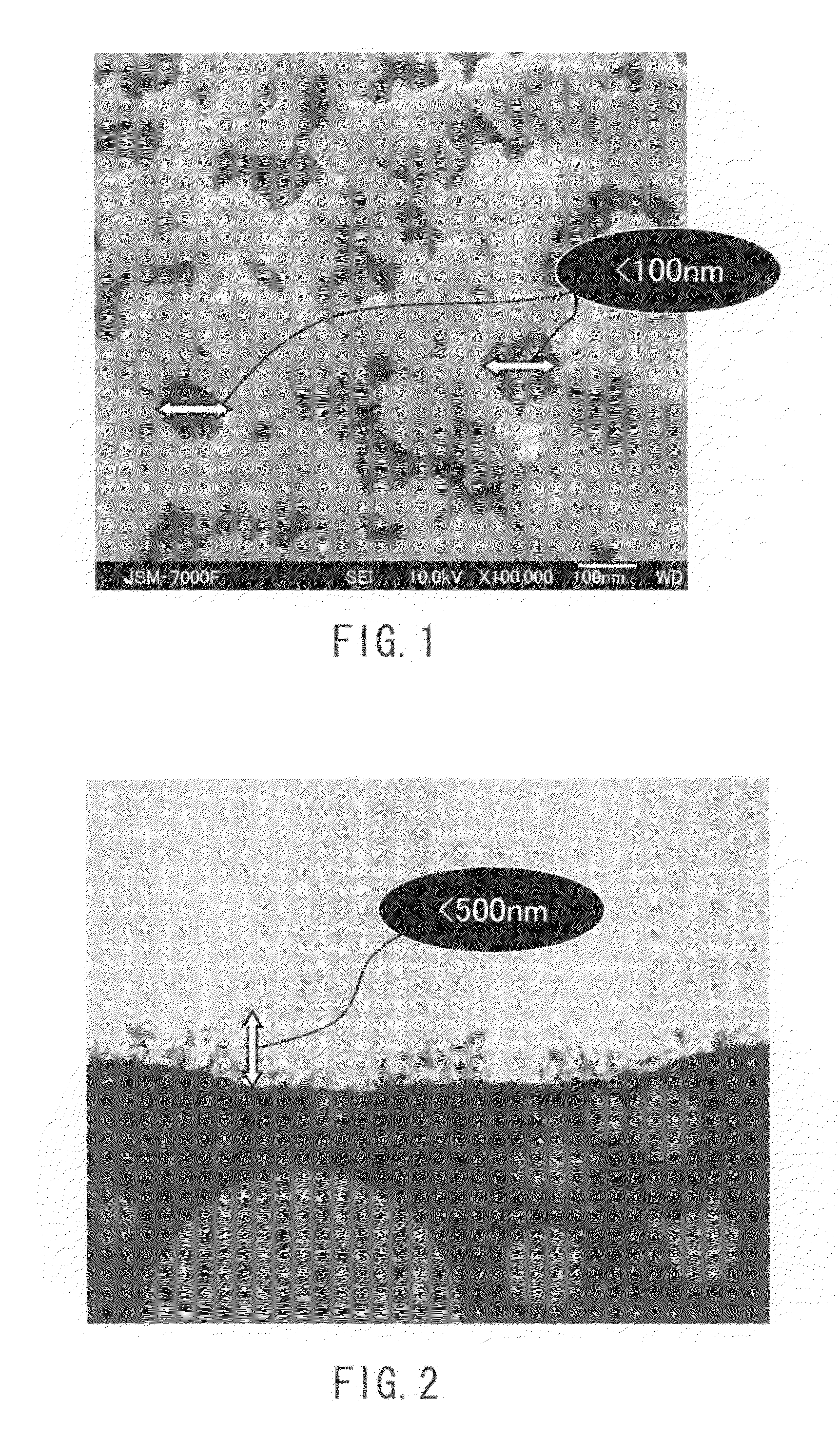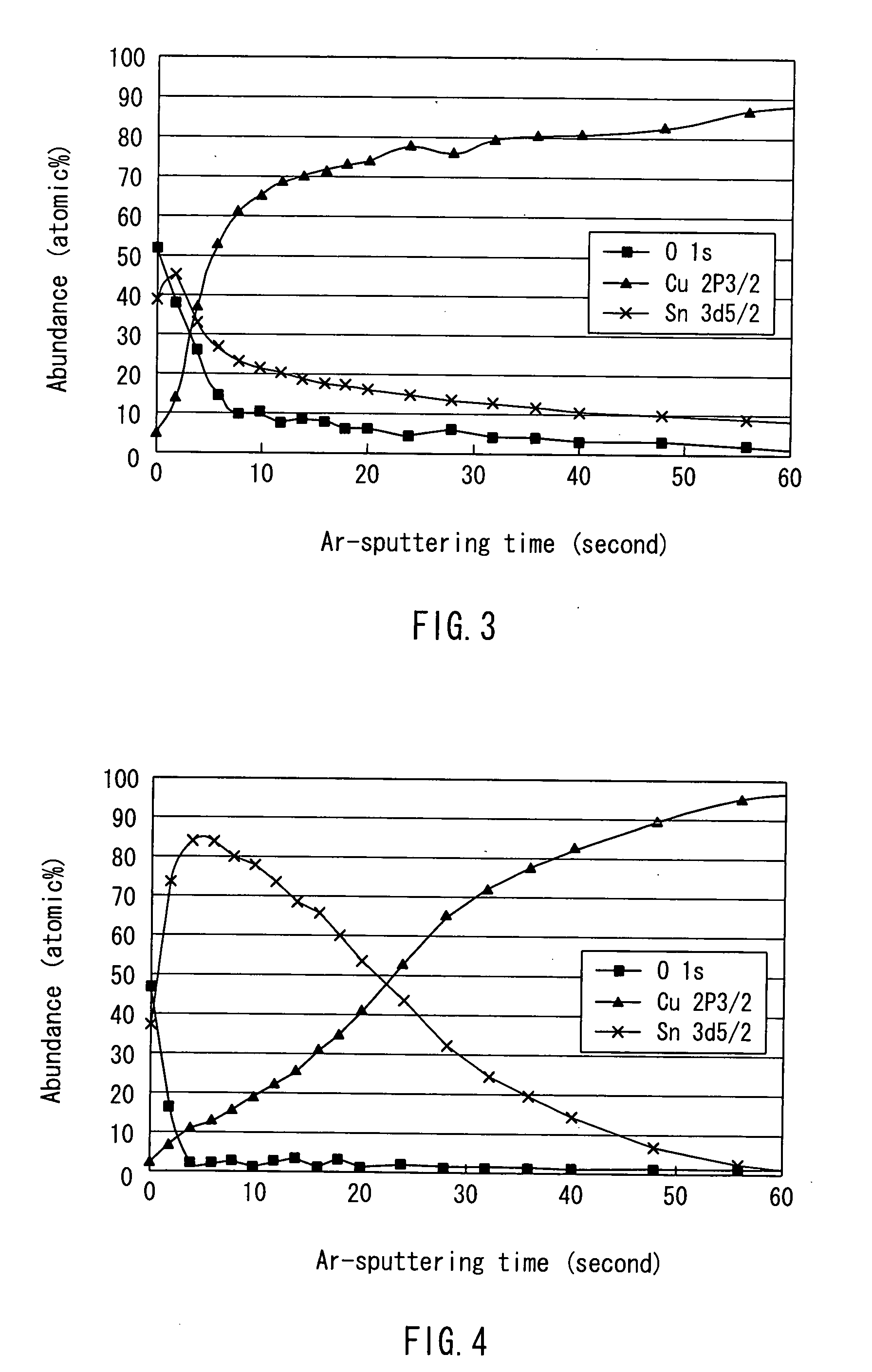Adhesive layer for resin and a method of producing a laminate including the adhesive layer
a technology of adhesive layer and resin, which is applied in the direction of dielectric characteristics, bandages, other domestic articles, etc., can solve the problems of insufficient adhesion, easy haloing, and insufficient adhesion improvement effect, so as to improve the adhesion to resin and achieve sufficient adhesion.
- Summary
- Abstract
- Description
- Claims
- Application Information
AI Technical Summary
Benefits of technology
Problems solved by technology
Method used
Image
Examples
example 1
(1) Surface Treatment and Measurement of Peeling Strength
[0076]An electrolytic copper foil was etched by 2 μm with an aqueous solution of sodium persulfate so as to remove a chromate coating or the like provided on a copper foil at the time of production, thereby exposing the clean copper surface. Then, the copper was dipped in an aqueous solution containing: 22 wt % of sulfuric acid, 1.8 wt % of stannous sulfate (Sn2+), 5 wt % of nickel sulfate (Ni2+), 15 wt % of thiourea, 2 wt % of copper sulfate, 30 wt % of diethylene glycol, and the ion exchange water as remainder, at a temperature of 30° C. for 30 seconds. Later, the copper was rinsed with water and dried.
[0077]On one surface of the thus obtained copper foil, a resin with a copper foil for buildup wiring (resin with copper foil ABF-SHC manufactured by Ajinomoto Co., Inc.; glass transition temperature Tg (TMA)=165° C.) was laminated and pressed with heat. The peeling strength of the copper foil in the thus obtained laminate was ...
examples 2 and 3
[0080]Examples 2 and 3 were carried out as in Example 1 except that the treatment solutions were changed as indicated in Table 1 below. The results are shown in Table 1.
example 4
[0083]A copper-clad lamination plate with a glass fabric impregnated with epoxy resin (FR4 grade; glass transition temperature Tg (TMA)=125° C.) was prepared by bonding copper foils having a thickness of 18 μm on both faces. The copper foils were sprayed for cleaning with 5 wt % hydrochloric acid for 10 seconds at room temperature. Subsequently, the copper was rinsed with water, and dried.
[0084]Next, the plate was dipped in the aqueous solution as in Example 1 at 30° C. for 30 seconds, and then rinsed with water and dried. An aqueous solution of 1 wt % acetic acid was prepared. This solution was stirred, to which 1 wt % of 3-glycidoxypropyltrimethoxysilane was added little by little, and the solution was further stirred for one hour so as to obtain a colorless and transparent solution. In this aqueous solution, the copper-clad plate treated in the above-described manner was dipped and shook for 30 seconds. Then, the plate was pulled out and drained sufficiently. Later, the plate was...
PUM
| Property | Measurement | Unit |
|---|---|---|
| Temperature | aaaaa | aaaaa |
| Temperature | aaaaa | aaaaa |
| Percent by mass | aaaaa | aaaaa |
Abstract
Description
Claims
Application Information
 Login to View More
Login to View More - R&D
- Intellectual Property
- Life Sciences
- Materials
- Tech Scout
- Unparalleled Data Quality
- Higher Quality Content
- 60% Fewer Hallucinations
Browse by: Latest US Patents, China's latest patents, Technical Efficacy Thesaurus, Application Domain, Technology Topic, Popular Technical Reports.
© 2025 PatSnap. All rights reserved.Legal|Privacy policy|Modern Slavery Act Transparency Statement|Sitemap|About US| Contact US: help@patsnap.com



